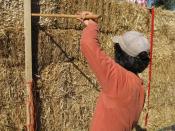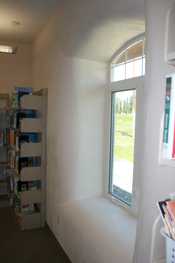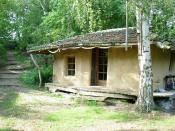Straw bale homes have been around for millennia. They were first used by cave men, and have since been used in medieval England, in America by the first settlers, and in many other areas where there are few trees from which to build houses. Today, they are making a resurgence as a "radical new idea".
Straw is the left-overs from harvesting cereal grains, such as wheat, rice or corn. When the grain is harvested, the stalks are left behind, and are usually burnt, as they are very resistant to decomposition and cannot just be plowed into the ground. These properties make it a good alternative for conventional housing materials. The houses recycle a waste product, saving it from being burnt and releasing more carbon dioxide and smoke into the atmosphere.
The Benefits
Straw bale buildings are:
Ecologically Friendly - Straw is produced in great quantities world wide, and by using it, we stop it being burnt, and reduce our impact on forests.
Energy Efficient - The tightly packed straw bales are excellent insulators, often two or three times better insulators than conventional housing. This greatly reduces noise pollution, and in cold countries, cuts down on heating costs.
Affordable - Straw bales are much cheaper than normal building materials, and the houses are much easier to make. It is quite possible to build one yourself, saving on labour costs.
Common Concerns
Fire - Straw houses actually have a lower fire risk rating in America and Canada, because the straw is so tightly compacted that there is not enough oxygen inside to let it burn. The walls are also thicker than in a conventional house, which makes it harder for a fire to catch hold.
Pests - Straw does not attract many pests, as it is has no nutritional value, and the...


